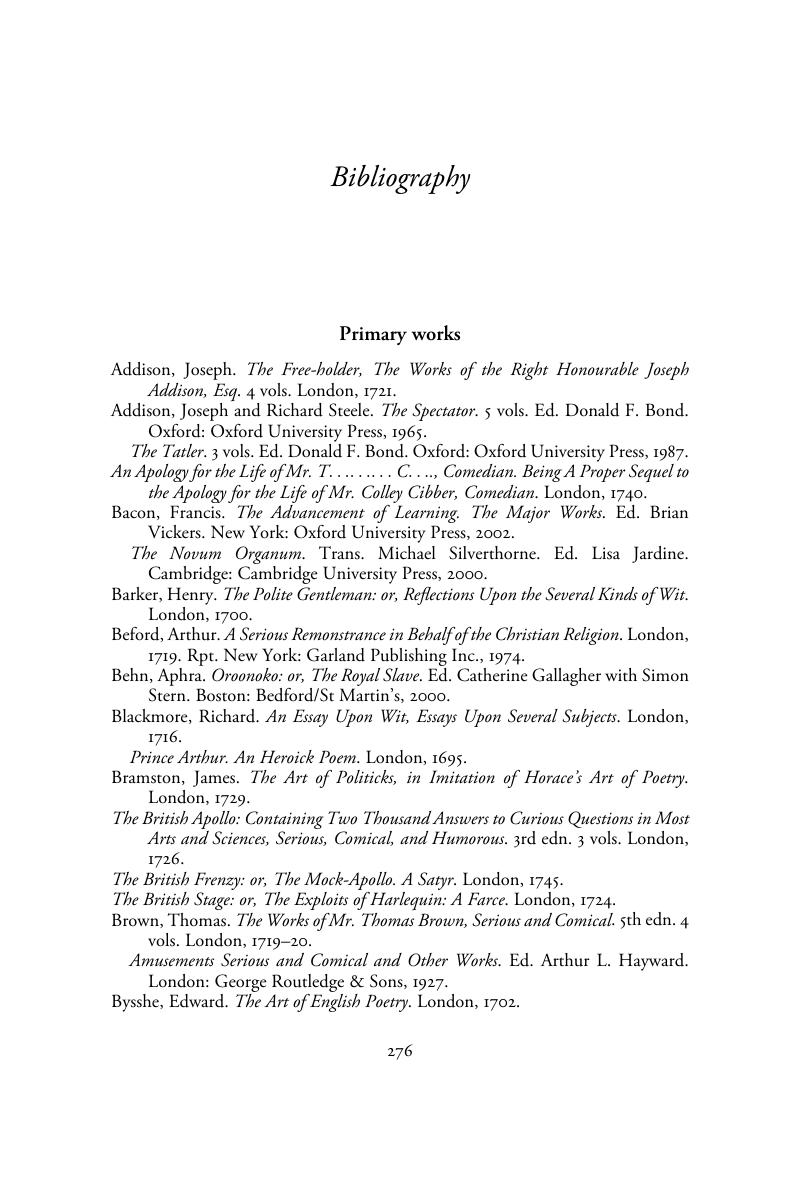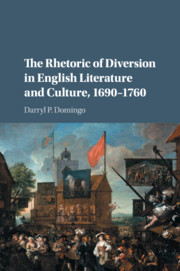Book contents
- The Rhetoric of Diversion in English Literature and Culture, 1690–1760
- The Rhetoric of Diversion in English Literature and Culture, 1690–1760
- Copyright page
- Dedication
- Contents
- Figures
- Book part
- “Unbending the mind”: introduction by way of diversion
- Chapter 1 “Thepredominanttaste of the present age”: diversion and the literary market
- Chapter 2 “Pleas’d at being so agreeably deceiv’d”: pantomime and the poetics of dumb wit
- Chapter 3 “Fasten’d by the eyes”: popular wonder, print culture, and the exhibition of monstrosity
- Chapter 4 “Pleasantry for thy entertainment”: novelistic discourse and the rhetoric of diversion
- “The soul of reading”: conclusion by way of animadversion
- Notes
- Bibliography
- Index
- References
Bibliography
Published online by Cambridge University Press: 05 March 2016
- The Rhetoric of Diversion in English Literature and Culture, 1690–1760
- The Rhetoric of Diversion in English Literature and Culture, 1690–1760
- Copyright page
- Dedication
- Contents
- Figures
- Book part
- “Unbending the mind”: introduction by way of diversion
- Chapter 1 “Thepredominanttaste of the present age”: diversion and the literary market
- Chapter 2 “Pleas’d at being so agreeably deceiv’d”: pantomime and the poetics of dumb wit
- Chapter 3 “Fasten’d by the eyes”: popular wonder, print culture, and the exhibition of monstrosity
- Chapter 4 “Pleasantry for thy entertainment”: novelistic discourse and the rhetoric of diversion
- “The soul of reading”: conclusion by way of animadversion
- Notes
- Bibliography
- Index
- References
Summary

- Type
- Chapter
- Information
- Publisher: Cambridge University PressPrint publication year: 2016



